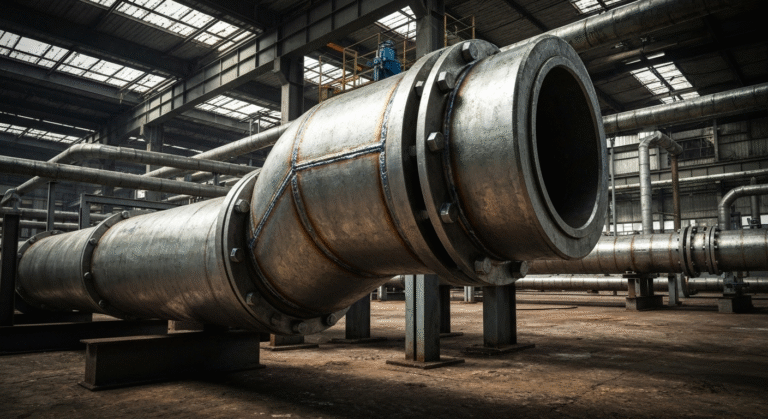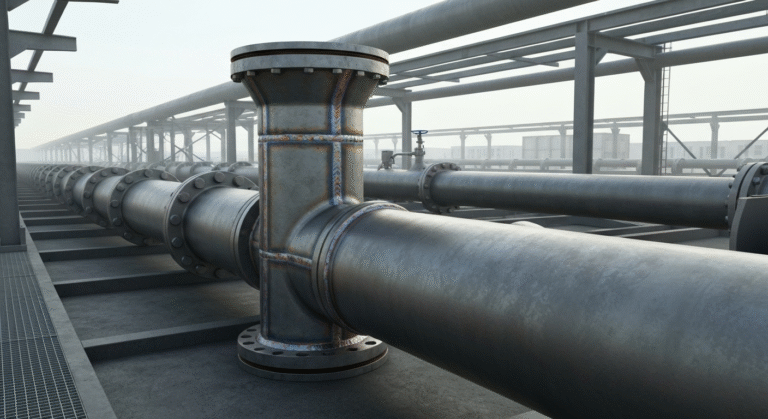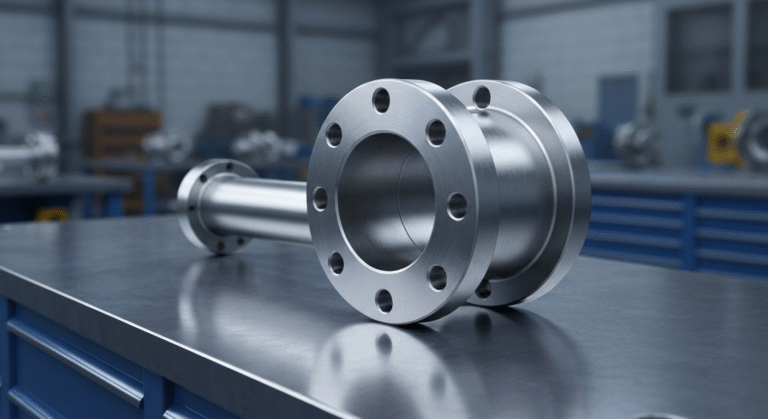-
Zone industrielle de Yinzhuang, comté de Mengcun, ville de Cangzhou, province de Hebei, Chine

Notions de base sur les brides : Types, fonctions et caractéristiques expliqués

Faits marquants
- Différents types de brides sont largement utilisés dans les systèmes de tuyauterie, notamment les brides à collet soudé, les brides à glissement, les brides à emboîtement, les brides aveugles et les brides à recouvrement.
- Les brides jouent un rôle essentiel en reliant solidement les extrémités des tuyaux et en facilitant la circulation des fluides dans les différentes canalisations.
- Les caractéristiques essentielles comprennent des options de revêtement de joint à face surélevée et à anneau, ainsi que des valeurs de pression pour la fiabilité sous contrainte.
- Les matériaux couramment utilisés pour les brides, tels que l'acier inoxydable et le laiton, garantissent la durabilité des applications industrielles.
- Les critères de sélection comprennent des spécifications telles que le diamètre extérieur, l'épaisseur et les pressions nominales adaptées aux besoins opérationnels.
- Les brides offrent des raccords de tuyauterie sûrs et étanches, faciles à installer et à entretenir dans diverses industries.
Introduction
Les brides jouent un rôle important dans les systèmes de tuyauterie. Elles offrent un moyen solide et sûr de raccorder les tuyaux, les raccords et les équipements. Les brides de tuyauterie permettent d'arrêter les fuites et de maintenir les éléments ensemble. Il en existe de nombreux types, comme les brides à collet soudé, les brides à recouvrement et les brides à face surélevée. Ces types de face fonctionnent pour différentes pressions, de sorte que les gens les utilisent aussi bien dans des situations de basse que de haute pression. Leur conception permet aux pipelines et aux systèmes de tuyauterie de bien fonctionner. S'il n'y avait pas de brides, il serait beaucoup plus difficile d'installer et de faire fonctionner des canalisations de fluides.
Que sont les brides et comment fonctionnent-elles ?
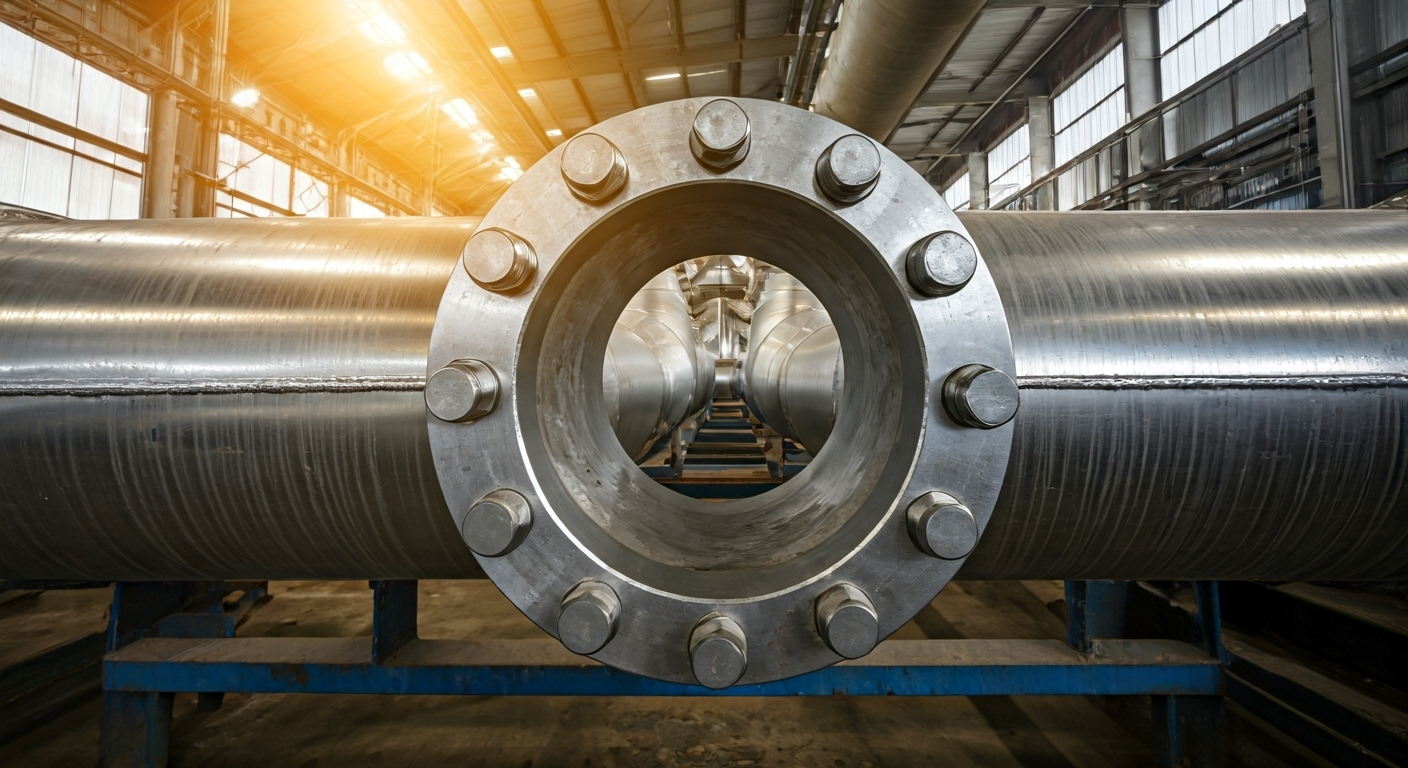
Une bride est un type de matériel que l'on utilise pour relier les parties d'un système de tuyauterie. Vous pouvez la glisser sur l'extrémité du tuyau ou la souder au tuyau. Les brides permettent de réaliser des connexions solides. Leur conception respecte certaines spécifications telles que l'alésage de la bride, le diamètre intérieur et le diamètre extérieur. Celles-ci correspondent aux différentes tailles de tuyaux.
L'un des types de brides les plus courants est la bride longue à collet soudé (bride WN). Elle possède un moyeu conique qui répartit les contraintes et assure des connexions solides. Que vous travailliez avec de simples canalisations d'eau ou que vous deviez déplacer des fluides lourds, le choix du bon type de bride est important pour le travail à effectuer.
Le rôle des brides dans les systèmes de tuyauterie
Les brides sont des éléments importants dans les conduites de fluides. Elles permettent de raccorder des tuyaux, des vannes et d'autres accessoires afin que tout fonctionne bien ensemble. Ces pièces assurent de bonnes liaisons entre les différentes sections. Elles contribuent à la solidité de la canalisation en comblant les éventuelles lacunes. Elles empêchent ainsi les fuites et garantissent la sécurité de l'ensemble.
Les brides sont très bien adaptées aux systèmes à haute pression. Elles restent solides et fonctionnent bien, même en cas d'usure ou de secousses importantes. Par exemple, les brides aveugles peuvent fermer l'extrémité d'un tuyau. Cela est utile si vous souhaitez en rajouter ou réparer quelque chose ultérieurement.
Les brides peuvent être utilisées dans de nombreux domaines, tels que le pétrole, le gaz et le traitement de l'eau. Leur utilisation dans les tuyauteries et les canalisations permet d'améliorer l'ensemble du système. Elles empêchent également les substances dangereuses de s'échapper des tuyaux, ce qui rend le système plus sûr. Comme les brides peuvent remplir toutes ces fonctions, elles sont présentes dans la plupart des installations de tuyauterie modernes dotées de vannes.
Composants clés et terminologie
Il est important de comprendre les composants des brides, y compris les brides couramment utilisées comme la bride à collet à soudure frontale, pour faire les bons choix. En principe, l'alésage de la bride doit correspondre au diamètre extérieur du tuyau. Cela permet de créer un ajustement serré qui fonctionne bien avec la tuyauterie. Les brides peuvent avoir différents types de face, comme la face surélevée (RF) et le joint annulaire (RTJ). Ces types de face conviennent à de nombreux besoins d'étanchéité.
Un autre élément clé est la joint. Il s'insère entre les faces de la bride. Il permet d'assurer l'étanchéité et de limiter les fuites dans les systèmes soumis à des pressions ou températures différentes. Le plaque tournante et sillon aider à donner encore plus de force, surtout en cas de pression ou de stress.
La rainure est un élément essentiel des brides à joint annulaire (RTJ). Elle permet au joint d'être placé au bon endroit, ce qui améliore l'étanchéité, en particulier par rapport au type RF. Chaque pièce collabore avec la tuyauterie pour maintenir la stabilité, la pression et la sécurité dans différents contextes. C'est pourquoi les brides sont si importantes dans la construction et l'entretien des pipelines.
Principaux types de brides utilisés en Australie
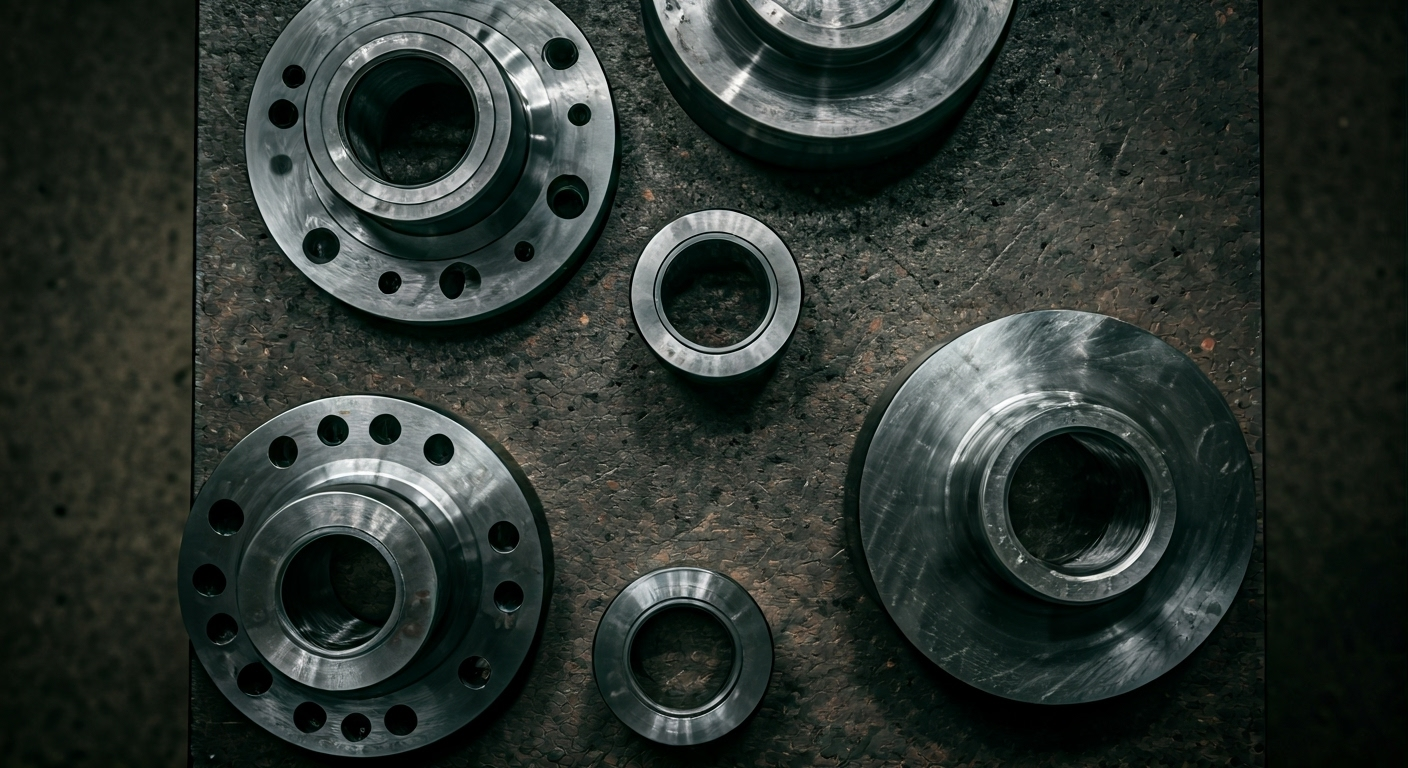
L'Australie utilise de nombreux types de brides afin d'être prête pour ses différents lieux de travail. Les habitants du pays optent souvent pour des brides à collerette à souder, à emboîtement et à emboîtement à souder. Ces dernières sont choisies parce qu'elles conviennent à de nombreux travaux et peuvent durer longtemps. On les trouve sur les conduites de fluides dans de nombreux endroits, y compris dans de nombreux types d'industries.
Les brides aveugles, les brides à recouvrement et les brides filetées sont également très utilisées. Ce sont elles qui permettent de fermer les canalisations définitivement ou pour une courte durée. La façon dont ces types de brides sont fabriqués permet à tout de fonctionner en douceur, même en cas de pression élevée ou faible. Il est important de choisir le bon type de bride, comme le joint à recouvrement ou le collet soudé, en fonction des besoins du travail, de l'utilisation des canalisations et de la nature de la zone.
Brides à souder, à emboîter et à emboîtement
Type de bride | Caractéristiques principales |
|---|---|
Bride à collet soudé | Haute répartition des contraintes ; sans soudure ; moyeu conique pour la stabilité. |
Bride à emboîter | Installation aisée ; rentable ; convient à une pression plus faible. |
Bride à souder | Raccord renforcé ; idéal pour les tuyaux de petit diamètre. |
Les brides à collet soudé répartissent bien les contraintes à la base de la bride. Cela permet d'assurer la sécurité de la zone et d'éviter les contraintes élevées en un seul point. Le moyeu conique le rend solide. Ce type de bride est donc idéal pour les conduites soumises à une pression constante.
Les brides à emboîter ont un diamètre intérieur plus grand. Cela permet de glisser facilement l'extrémité du tuyau. Elles simplifient le travail de soudure et de montage. Elles sont peu coûteuses et conviennent mieux aux travaux à faible pression dans le système.
Les brides à souder à emboîtement offrent un raccordement solide et étanche pour les tuyaux de petit diamètre. Le tuyau est soudé directement dans l'emboîture de la bride. Cela permet de bien maintenir l'ensemble à haute pression. La facilité de fabrication de ces types de brides permet de les installer rapidement pour différents travaux.
Chaque type de bride est conçu pour répondre à des besoins différents sur le lieu de travail, ce qui vous permet de choisir ce qui convient le mieux à votre système.
Brides aveugles, brides à recouvrement et brides filetées
Les brides aveugles sont utilisées pour fermer les extrémités des tuyaux. Elles contribuent à la sécurité des personnes en bloquant les parties du tuyau qui ne sont pas utilisées. Grâce à leur forme plate, les brides aveugles sont très importantes dans les installations de tuyauterie où il peut être nécessaire d'ajouter des pièces ou de réparer quelque chose ultérieurement.
Les brides à recouvrement sont conçues pour fonctionner avec des embouts. Elles permettent aux pièces de tourner afin que vous puissiez tout aligner correctement lors de l'assemblage. Vous disposez de plus de possibilités de déplacement des pièces, ce qui permet d'éviter l'usure des tuyaux et des pièces de raccord. En outre, les brides à recouvrement constituent un bon choix pour les travaux où la pression est faible.
Les brides filetées sont dotées d'un filetage, ce qui permet de les visser sans avoir à les souder. Elles sont souvent utilisées pour les tuyaux qui ne sont pas très grands. Les brides filetées sont également utiles dans les endroits où il faut assembler et démonter le tuyau à plusieurs reprises. Les trois types de brides - brides aveugles, brides à recouvrement et brides filetées - vous offrent davantage de possibilités pour construire un système de tuyauterie qui fonctionne bien.
Fonctions essentielles et avantages des brides
Les brides sont idéales pour réaliser des joints solides dans les systèmes de tuyauterie. Elles permettent de maintenir la pression, d'arrêter les fuites et de faciliter l'entretien. C'est important pour tout travail où les choses doivent circuler sans problème dans les tuyaux.
Grâce aux brides, les tuyaux et les vannes restent solidement assemblés. Ils peuvent supporter une utilisation et une pression importantes. Ces joints peuvent être démontés, ce qui permet de les vérifier et de les réparer rapidement en cas de besoin. Le travail est ainsi effectué en moins de temps. On les voit partout, ce qui montre à quel point ils sont nécessaires pour maintenir la tuyauterie en bon état.
Connexions sécurisées et maintenance aisée
Les brides permettent de réaliser des raccords solides entre les extrémités des tuyaux. Cela permet d'éviter les mauvaises utilisations ou les fuites. Elles sont fabriquées dans des matériaux résistants tels que l'acier inoxydable et l'alliage, ce qui leur confère une longue durée de vie.
- Les brides permettent de démonter rapidement les objets pour les réparer.
- Le diamètre extérieur lisse s'aligne bien et facilite le scellement et le test.
- Les joints étanches réduisent le risque de fuite de fluides dangereux.
Ces pièces faciles à utiliser permettent de maintenir les choses en bon état sans retarder le travail. Les brides facilitent également les échanges et les changements, ce qui est très utile pour les travaux nécessitant beaucoup d'entretien.
Garantir le confinement de la pression et la prévention des fuites
Les systèmes de tuyauterie modernes utilisent des brides pour maintenir une pression stable et sûre. Les brides ont des caractéristiques de pression. Cela signifie qu'elles sont conçues pour supporter des pressions élevées sans se déformer. Les brides à face surélevée et les brides à anneau permettent d'assurer l'étanchéité et d'empêcher l'air de s'échapper. Des joints sont également utilisés pour améliorer encore la protection.
En cas de fortes contraintes, les brides à joint annulaire utilisent des rainures pour maintenir les joints en place. Cela permet d'éviter les fuites. Les brides conçues pour la haute pression contribuent à la sécurité des personnes et du lieu de travail dans de nombreux types d'activités industrielles. Vous pouvez faire confiance à ces conceptions pour donner aux pipelines la résistance dont ils ont besoin et contribuer au bon fonctionnement de l'ensemble.
Caractéristiques principales et critères de sélection des brides
Le choix du bon type de bride dépend de quelques éléments importants. Il s'agit du matériau utilisé, de la pression nominale et des spécifications, telles que l'épaisseur et la taille.
L'acier inoxydable et le laiton sont des choix populaires qui répondent à des normes industrielles strictes, telles que ASTM et ANSI. En outre, les différents types de revêtement, tels que la face plate et le joint torique, modifient l'efficacité de la canalisation pour certains besoins. Lorsque vous faites correspondre ces critères à la canalisation, vous vous assurez qu'elle fonctionne bien dans de nombreuses conditions.
Matériaux, pressions nominales et types de revêtement
Les brides sont fabriquées dans des matériaux robustes, tels que l'acier inoxydable, l'alliage et le laiton en acier au carbone. Ces matériaux sont conformes aux normes les plus strictes, telles que ASTM, ANSI et DIN, ce qui permet de faire confiance à leur qualité.
Les pressions nominales commencent à la classe 150 et vont jusqu'à PN 2500. Cela couvre à la fois les travaux légers et les travaux difficiles. Les brides à face surélevée sont idéales pour les travaux à haute pression. Les brides à face plate conviennent mieux aux tâches plus légères. Les spécifications couvrent une large gamme, de sorte que vous pouvez les utiliser dans de nombreuses industries différentes.
Il existe de nombreux types de faces, et RTJ est l'un d'entre eux. La RTJ contribue à protéger les pipelines, même lorsque la pression est très élevée. Pour toutes ces raisons, les brides sont utiles à de nombreux égards pour assurer le bon fonctionnement des systèmes.
Conclusion
Connaître les principes de base des brides est important pour toute personne travaillant avec des tuyauteries. Cela vaut aussi bien pour les débutants que pour ceux qui travaillent dans ce domaine depuis des années. Les brides permettent d'assurer l'étanchéité des raccords, de maintenir la pression et de faciliter les réparations. Lorsque vous connaissez les différents types de brides et leurs fonctions, vous pouvez faire des choix plus judicieux. Cela peut contribuer à rendre votre travail plus sûr et à en améliorer le fonctionnement. Le choix de la bonne bride est très important. Il peut avoir un effet important sur le fonctionnement de votre système. Si vous avez des questions ou si vous souhaitez obtenir des conseils sur la tuyauterie, vous pouvez prendre contact avec un expert qui vous aidera à répondre à vos besoins.
Comprendre les brides : Un guide complet
Une exploration approfondie des brides révèle leur rôle essentiel dans divers systèmes de tuyauterie, facilitant des connexions sûres dans de nombreuses applications. La compréhension des différents types de brides - telles que les brides à collet soudé et les brides à recouvrement - et de leurs spécifications respectives, y compris le diamètre extérieur, les pressions nominales et les normes ASME, peut avoir un impact significatif sur les performances. L'efficacité de l'installation et de la maintenance dépend de la sélection des matériaux appropriés, tels que l'acier inoxydable ou l'inconel, et de l'alignement correct de l'alésage de la bride avec l'extrémité du tuyau, ce qui améliore en fin de compte l'intégrité des systèmes de transport de fluides.
Types de brides et leurs fonctions uniques
La diversité des brides permet de répondre aux différents besoins des systèmes de tuyauterie. Par exemple, les brides à collet soudé offrent une intégrité structurelle grâce à leur conception robuste, tandis que les brides à emboîtement facilitent l'alignement et l'installation. Les brides aveugles, quant à elles, assurent une étanchéité parfaite à l'extrémité d'un tuyau, ce qui permet d'isoler efficacement les sections. De même, les brides à recouvrement permettent des ajustements pendant l'installation, ce qui est essentiel dans les environnements dynamiques. Chaque type présente des caractéristiques distinctes qui influencent l'écoulement des fluides, les pressions nominales et la fonctionnalité globale dans différentes applications.
Exploration des différentes conceptions de brides et de leurs applications
Diverses conceptions de brides répondent à des applications spécifiques, assurant un transfert efficace des fluides dans divers environnements. Les brides à collet soudé, caractérisées par une transition progressive entre la bride et la tuyauterie, offrent une résistance robuste sous haute pression, ce qui les rend idéales pour les applications critiques. Inversement, les brides aveugles créent un joint d'étanchéité à l'extrémité d'un tuyau, ce qui permet d'éviter les fuites. Pour les applications nécessitant de la flexibilité, les brides à recouvrement sont avantageuses, car elles facilitent l'alignement et l'assemblage dans diverses configurations, améliorant ainsi l'intégrité globale du système et la flexibilité de la maintenance.
Principales caractéristiques à prendre en compte lors du choix d'une bride
Le choix de la bonne bride comporte plusieurs caractéristiques essentielles. Il convient de prêter attention aux matériaux, car des options telles que l'acier inoxydable ou le laiton influencent la durabilité et la compatibilité avec diverses conduites de fluides. Les pressions nominales, indiquées par la gamme de classes et la désignation lb, déterminent la capacité de la bride à supporter des pressions élevées sans défaillance. En outre, la prise en compte des types de revêtement, tels que la face surélevée, la face plate ou la face de joint annulaire, influence l'efficacité de l'étanchéité. Les spécifications relatives aux diamètres intérieur et extérieur assurent un ajustement correct aux extrémités des tuyaux, garantissant ainsi des performances optimales dans le système de tuyauterie.
Comment installer et entretenir correctement les brides pour des performances optimales ?
L'installation correcte des brides nécessite un alignement minutieux afin de garantir une étanchéité efficace. Il faut d'abord s'assurer que les faces de la bride sont propres et exemptes de débris, puis sélectionner le joint approprié en fonction du type de bride et de l'application. Le boulonnage doit être effectué de manière régulière, en maintenant un couple constant pour tenir compte des variations de pression nominale et d'épaisseur des matériaux. Des inspections régulières sont essentielles pour identifier l'usure ou le désalignement, tandis que l'entretien comprend le resserrage des boulons et le remplacement des joints si nécessaire. Le respect de ces pratiques améliore la longévité et les performances de diverses conduites de fluides.
Questions fréquemment posées
Quels sont les différents types de brides couramment utilisés dans les systèmes de tuyauterie ?
Les types de brides à plaques les plus courants dans les systèmes de tuyauterie sont les brides à collerette à souder, les brides à glissement, les brides à emboîtement à souder, les brides aveugles, les brides à recouvrement et les brides filetées. Chaque type répond à des besoins spécifiques en fonction des exigences de raccordement, des pressions nominales et des méthodes d'installation, afin de garantir un renforcement fiable pour une manipulation efficace des fluides.
Comment les matériaux des brides influencent-ils leurs performances et leurs applications ?
Les matériaux des brides influencent considérablement les performances, en déterminant la solidité, la résistance à la corrosion et la tolérance à la température. Par exemple, les brides en acier inoxydable excellent dans les environnements à haute pression, tandis que les options en plastique sont idéales pour les pressions plus faibles. La sélection appropriée des matériaux garantit une fonctionnalité et une longévité optimales dans des applications spécifiques, améliorant ainsi la fiabilité du système.
À quoi servent les joints de bride et comment fonctionnent-ils ?
Les joints de bride servent de joints entre les brides, empêchant les fuites et maintenant la pression dans les systèmes de tuyauterie. Ils se compriment entre les brides lorsqu'elles sont boulonnées, comblant ainsi tout écart et assurant l'étanchéité de la connexion. Cette fonction est essentielle pour assurer des performances et une sécurité optimales dans diverses applications.
Comment puis-je déterminer la taille de bride adaptée à mon projet ?
Pour déterminer la taille de bride adaptée à votre projet, mesurez le diamètre de la tuyauterie et la pression requise. En outre, tenez compte des conditions d'application et de toutes les normes applicables pour garantir un ajustement correct et des raccordements sûrs dans votre système de tuyauterie.
Quels sont les problèmes courants qui peuvent résulter d'une mauvaise installation des brides ?
Des brides mal installées peuvent entraîner plusieurs problèmes, notamment des fuites, un mauvais alignement et une usure accrue des systèmes de tuyauterie. En outre, elles peuvent provoquer des vibrations excessives ou une défaillance du système, compromettant ainsi la sécurité et l'efficacité opérationnelle. Un entretien régulier et une installation correcte sont essentiels pour éviter ces problèmes.
Comment les raccords à brides se comparent-ils aux raccords soudés ou filetés en termes d'entretien et de réparation ?
Les raccords à brides sont généralement plus faciles à entretenir et à réparer que les raccords soudés ou filetés. Ils permettent un démontage rapide sans coupure, ce qui réduit les temps d'arrêt. En outre, les brides peuvent être réutilisées, ce qui minimise les coûts de remplacement par rapport à la nature plus permanente des soudures ou des filetages.

